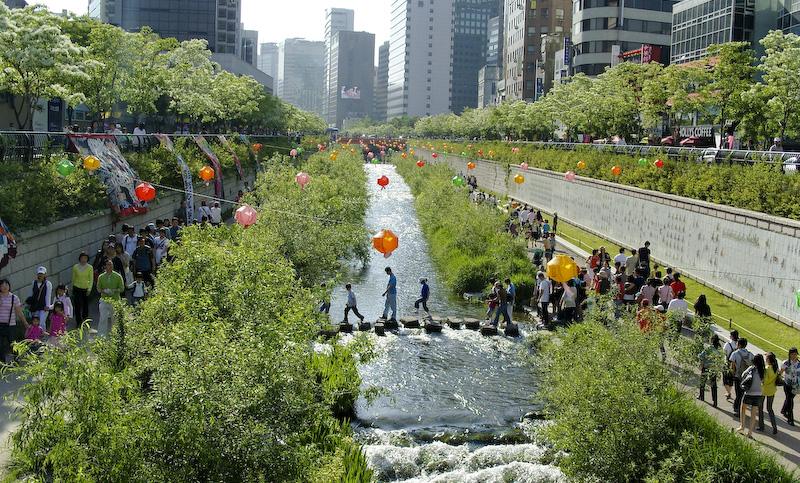
The video is very inspiring and I encourage you to watch it. Could we similarly re-connect to some of our industrial waterways?
Anyway, in the video they interview some professorial type engineers who study traffic flow. And they figured that even though they removed a very busy highway, the traffic still moved quickly. In the end, it even sped up a bit.
And this is a concept that is hard for people to get there heads around. I've talked about it with people, and they think I am flat out wrong. But it is proven to be true that widening roads and adding lanes does not solve congestion, but often increases it. One person in the video says a good analogy is that people think traffic is like liquid in a tube, and that if one part is squeezed, then the other arteries clog or fatten. But the analogy is false. Traffic is better thought of as a gas in that it can compress and expand to fill whatever is built.
Below are a few links I found that try to partially explain this phenomenon:
The Road Paradox:
Did you know that adding a road to a road network can actually slow traffic? We've all had our suspicions that new roads don't always help, but it can actually be shown mathematically.
Induced Demand:
Motorways and bypasses generate traffic, that is, produce extra traffic, partly by inducing people to travel who would not otherwise have done so by making the new route more convenient than the old, partly by people who go out of their direct route to enjoy the greater convenience of the new road, and partly by people who use the towns bypassed because they are more convenient for shopping and visits when through traffic has been removed.
Externality:
When car owners use roads, they impose congestion costs on all other users.
Downs Thomson Paradox:
...states that the equilibrium speed of car traffic on the road network is determined by the average door-to-door speed of equivalent journeys by (rail-based or otherwise segregated) public transport.
It follows that increasing road capacity can actually make overall congestion on the road worse. This occurs when the shift from public transport causes a disinvestment in the mode such that the operator either reduces frequency of service or raises fares to cover costs. This shifts additional passengers into cars. Ultimately the system may be eliminated and congestion on the original (expanded) road is worse than before...
The Braess Paradox






2 comments:
So is there a movement afoot to restore the Central Parkway canal? ;-)
It's interesting to note that we have no segregated public transport in Cincinnati (rail-based or otherwise), so the paradox isn't applicable here. Nice theory for elsewhere though.
The paradox applies, it's just that Cincinnati has already lost its rail transit. Union Terminal once served 34,000 passengers a day, and some of our old Streetcar (a.k.a. "trolly") lines had about 1 car per minute passing by.
When we started subsidizing the construction of highways, it meant lower ridership and less fare income for rail transit. That resulted in less frequent service or higher fares, causing even fewer people to ride, and the cycle continued... to the point where we have, what, one train leaving from Union Terminal every other day?
It's a lot easier to destroy existing rail transit than to build a new system from scratch.
Post a Comment